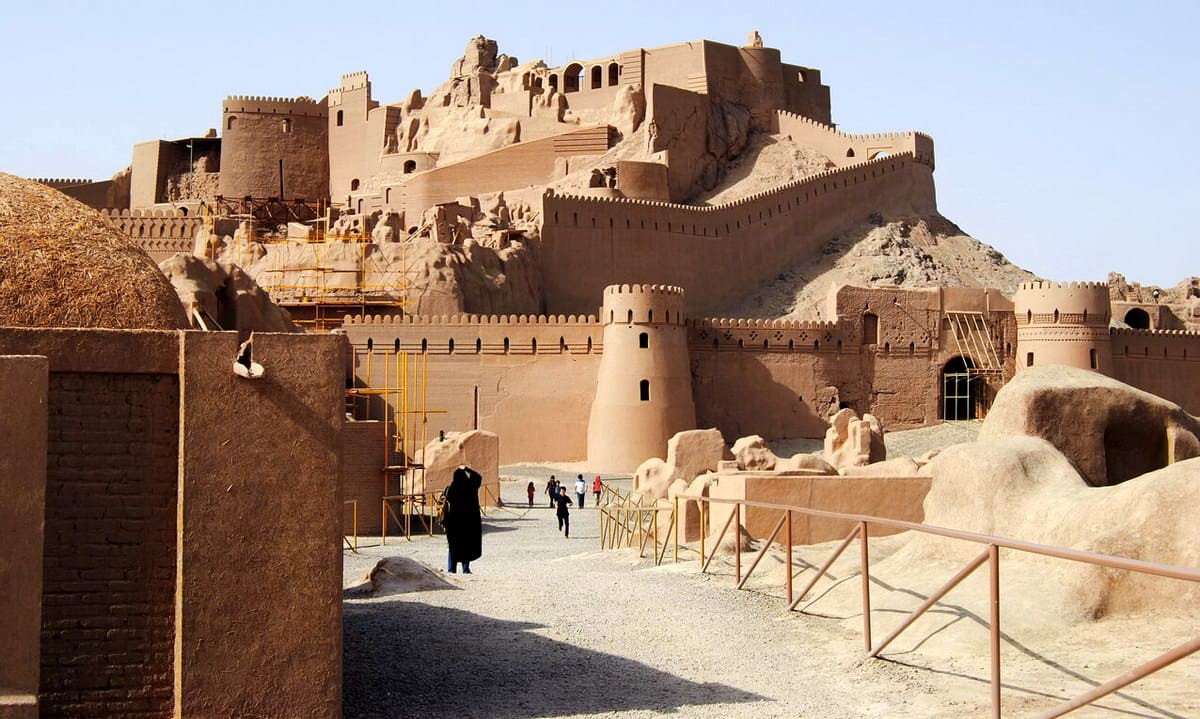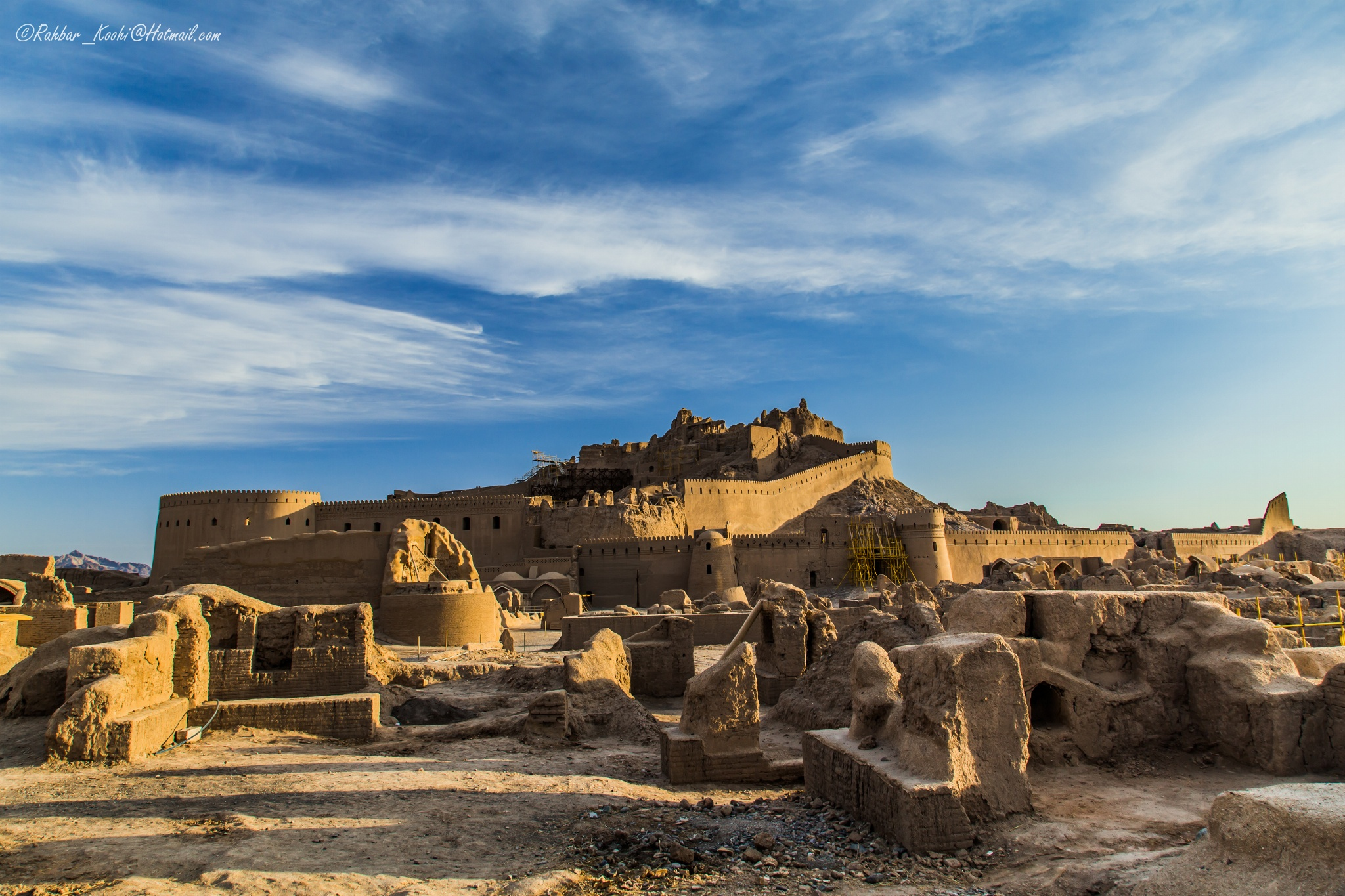Arg-e Bam the citadel of Bam, is the largest adobe brick construction in the world

The Arg-e Bam (Bam Citadel) was the largest adobe building in the world, located in Bam, a city in the Kerman Province of southeastern Iran. It is listed by UNESCO as part of the World Heritage Site “Bam and its Cultural Landscape”. The origin of this enormous citadel on the Silk Road can be traced back to the Achaemenid period (6th to 4th centuries BC) and even beyond. The heyday of the citadel was from the 7th to 11th centuries, being at the crossroads of important trade routes and known for the production of silk and cotton garments.
Ar-e Bam is in a vast desert plateau in the southern reaches of Iran, the Bam Citadel rises up like a Phoenix again from the intimating earthquake after being almost entirely leveled in the 2003 Bam Earthquake. Tracing it’s origins back to the 6th century BC in the Achaemenid Period, the oasis town and citadel of Bam didn’t experience it’s golden era until much later in the 7th til 11th centuries when it was one of the key stops on the Silk Route transporting goods between Asia, Europe, and the Middle East.
The Arg-e Bam, the world’s largest brick building, is one of the most important and most valuable historical landmarks of Iran. The predecessors of this massive historical complex built on a large rock near Bam city in Kerman province. The whole building is a great fortress located in the heart of the citadel, but due to the appearance of the Arg-e Bam, which is also the highest part of the complex, the whole building of the castle is called the Arg-e Bam.

On December 26, 2003, the Citadel was almost completely destroyed by an earthquake, along with much of the rest of Bam and its environs. A few days after the earthquake, the Iranian President Mohammad Khatami announced that the Citadel would be rebuilt. The Citadel of Bam(Arg-e Bam), which was habitable and in a fairly good condition until a hundred and fifty years ago, has, according to Hudud ol-Alam and other reliable sources that have come down to us from the 10th century AD, been founded some 2,000 years back, and has been repeatedly repaired thereafter.
Thanks to a series of underground irrigation canals, life was able to flourish in this inhospitable environment and Bam thrived as a trading center – resulting in the Arg-e Bam, the citadel which today is the best (and most photogenic) example of a medieval fortified town built using mud layers.
This historic Arg is one of several architectural forms including the walls of the fence, the tower, and the gates, the mosque, the market, the inn, the caravanserai, the school, the bathroom, the Zurkhaneh and the residential neighborhoods with the houses of the Livonians, the governorate including the barracks, the stables The mill, the house of the commander of the army and the governor’s domicile include the ruling house, the four-story mansion and the observatory.

The only gateway which is used now is the south gateway. Turning from the northern end of Sajadi street to the east of Arg street, you would reach whrere that in the past there had been the moat of citadel and now there is a park with young trees and beautiful white and purple flowers of oleander bushes. This park has established by Bam municipality. The southern gateway of citadel sites in the north side of the park.
Today, 99% of the project to save Bam is complete and the citadel is back ready to accept visitors. Interesting the sections of the Bam landscape have been left on purpose as UNESCO does now allow countries to entirely hide the effects of earthquakes – since Earthquakes themselves are historic events.
Although there is a controversy surrounding the history of the formation of this historic citadel between the Parthian periods and even before it during the Achaemenid period, most of the buildings that were built before the earthquake were attributed to the Timurid period to the Qajar period. Nevertheless, parts like the porch of the mosque with a large and varied scale remind of much older periods (like the 4th century AH during the Samanids to the 7th century AH during the Seljuk period). Finally, the Bam Arg has been inhabited during the Qajar period.

Considering the architecture used in this collection, one can clearly see the authentic Iranian architecture, which is a perfect example of the skill, tact and creativity of the builders of the building, Even after several centuries, and given the advances made in the field of building materials and materials, the existing bricks to repair damaged parts are not the quality of the early clay.
Related Post
A shocking documentary proves that mermaids do exist
SHOCKING Revelation: Thuya, Mother of Queen Tiye, Was the Grandmother of Akhenaten and Tutankhamun—What Ancient Egyptian Secrets Did She Leave Behind?
Breaking News: Astonishing Discoveries at Karahan Tepe Confirm an Extraterrestrial Civilization is Hiding on Earth, and NO ONE Knows!
Breaking News: Researchers FINALLY Discover U.S. Navy Flight 19 After 75 Years Lost in the Bermuda Triangle!
NASA’s Secret Investigation: Uncovering the Astonishing Mystery of the UFO Crash on the Mountain!
Explosive UFO Docs LEAKED: Startling Proof That Aliens Ruled Ancient Egypt!